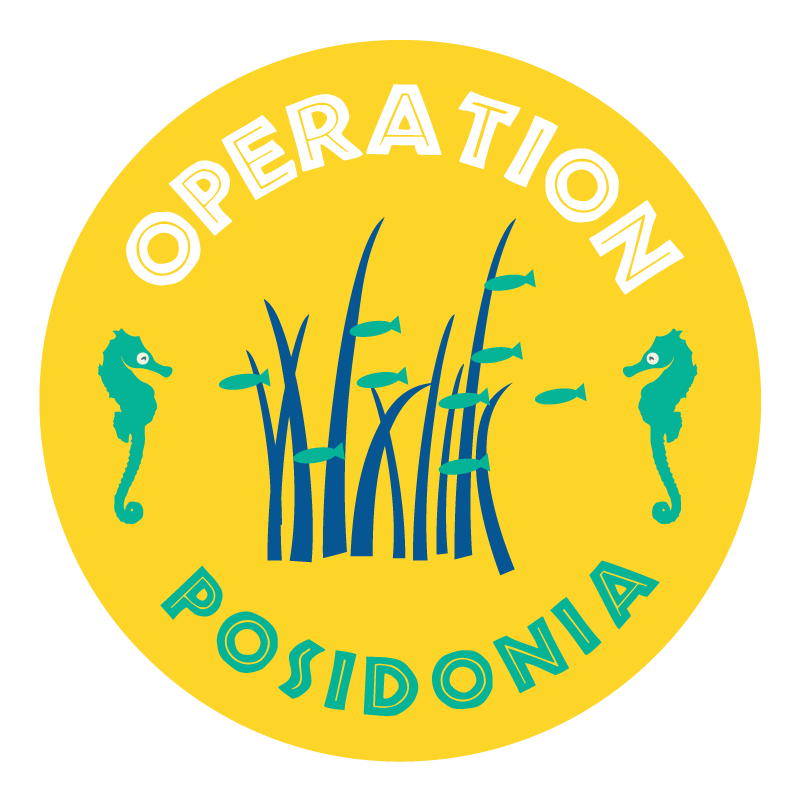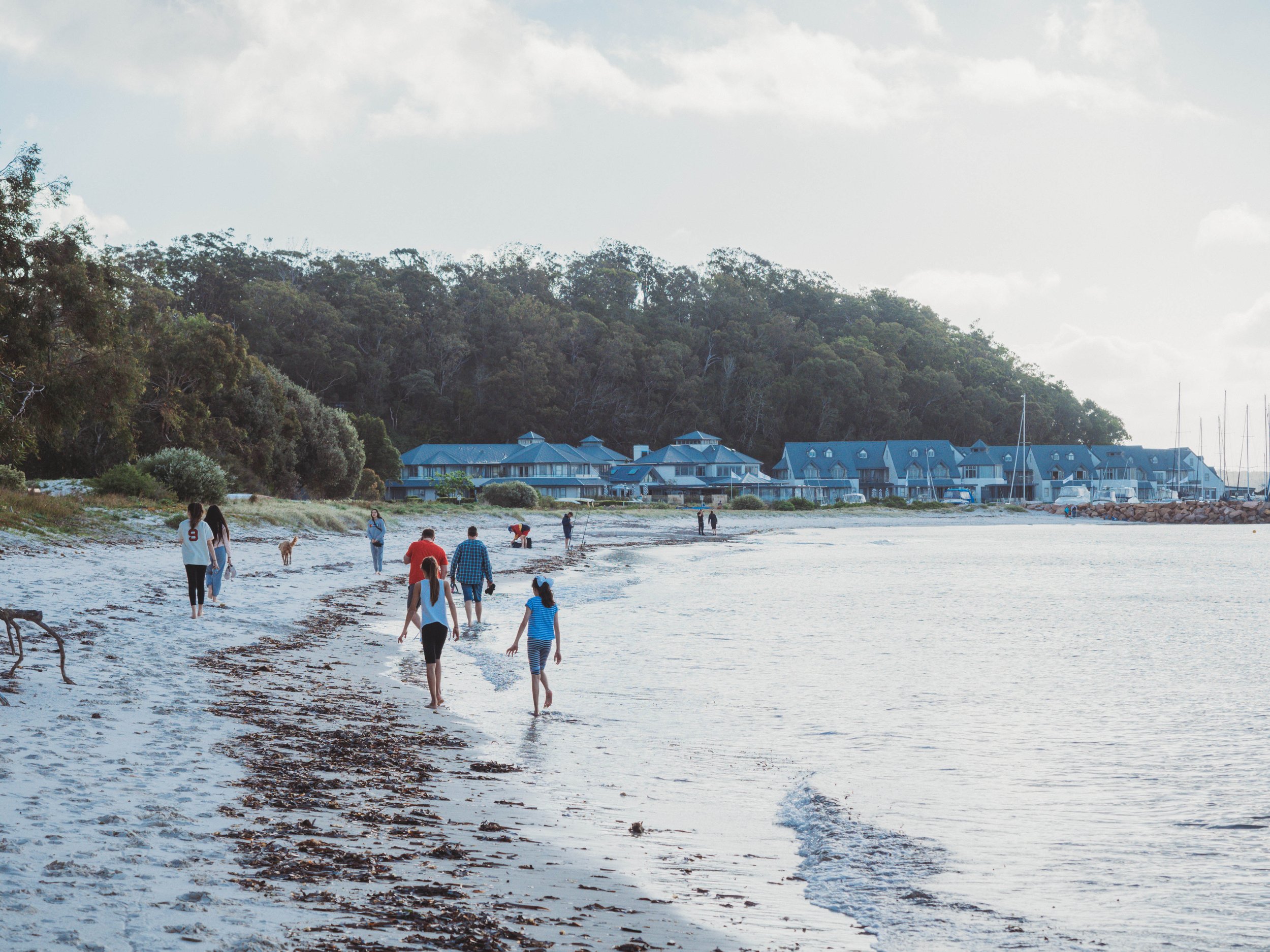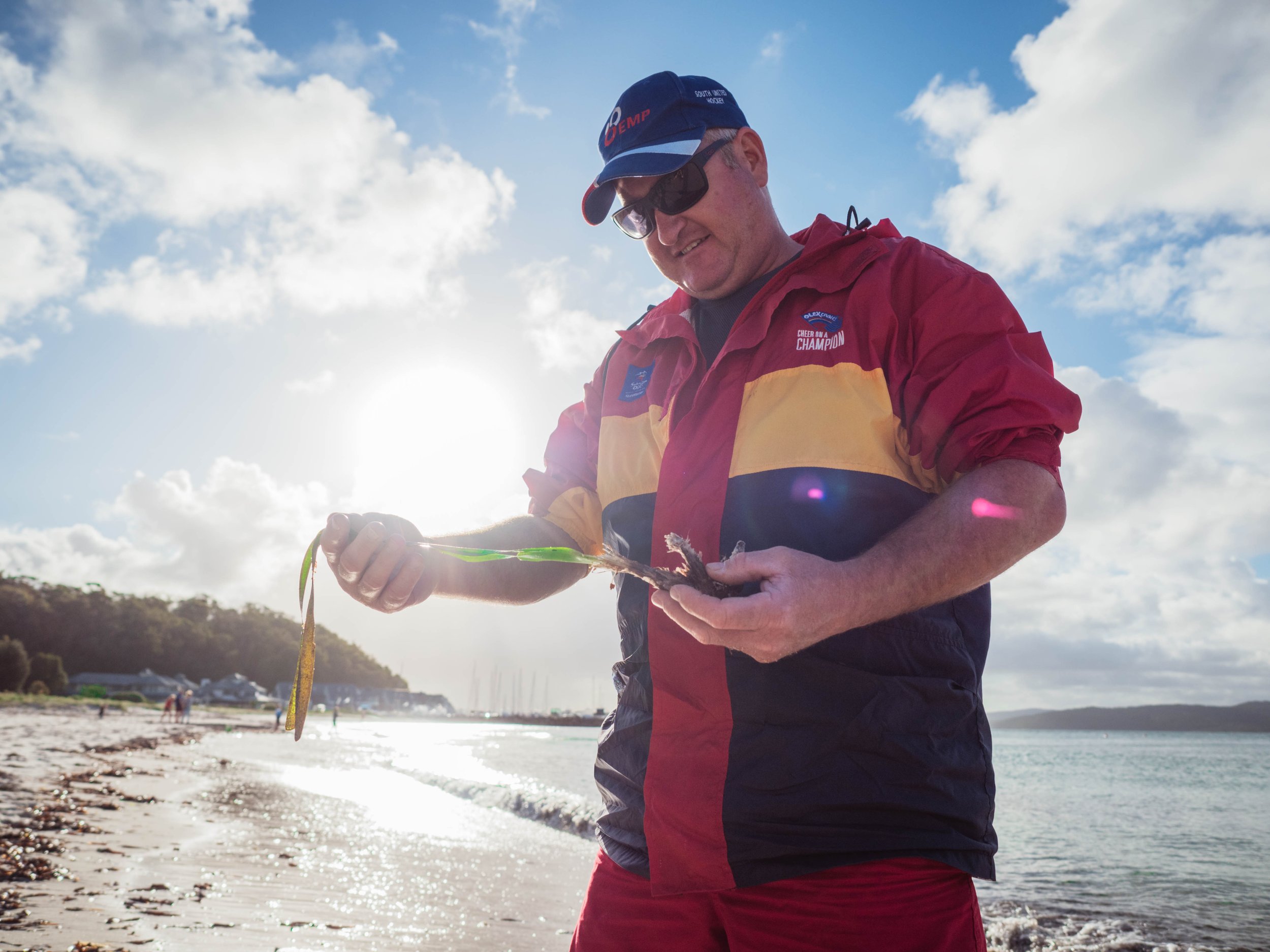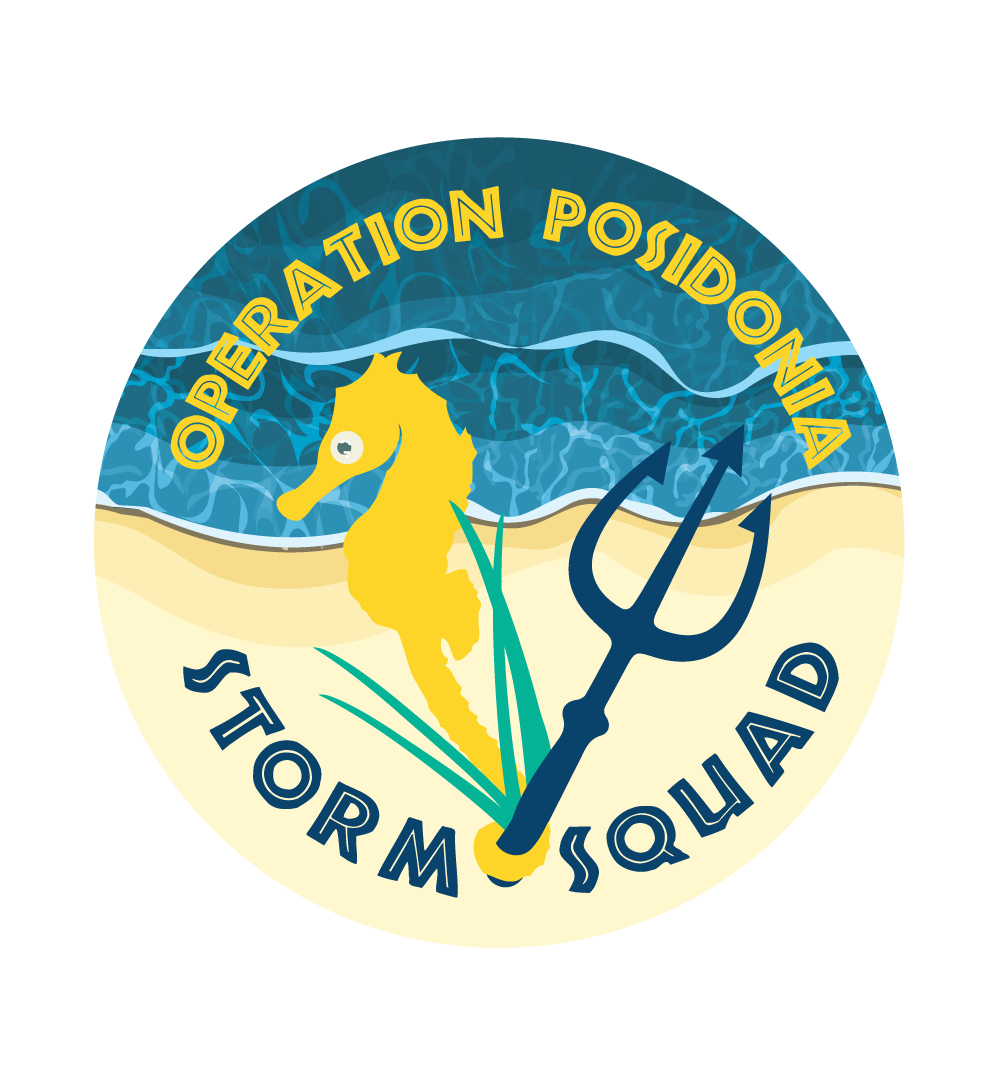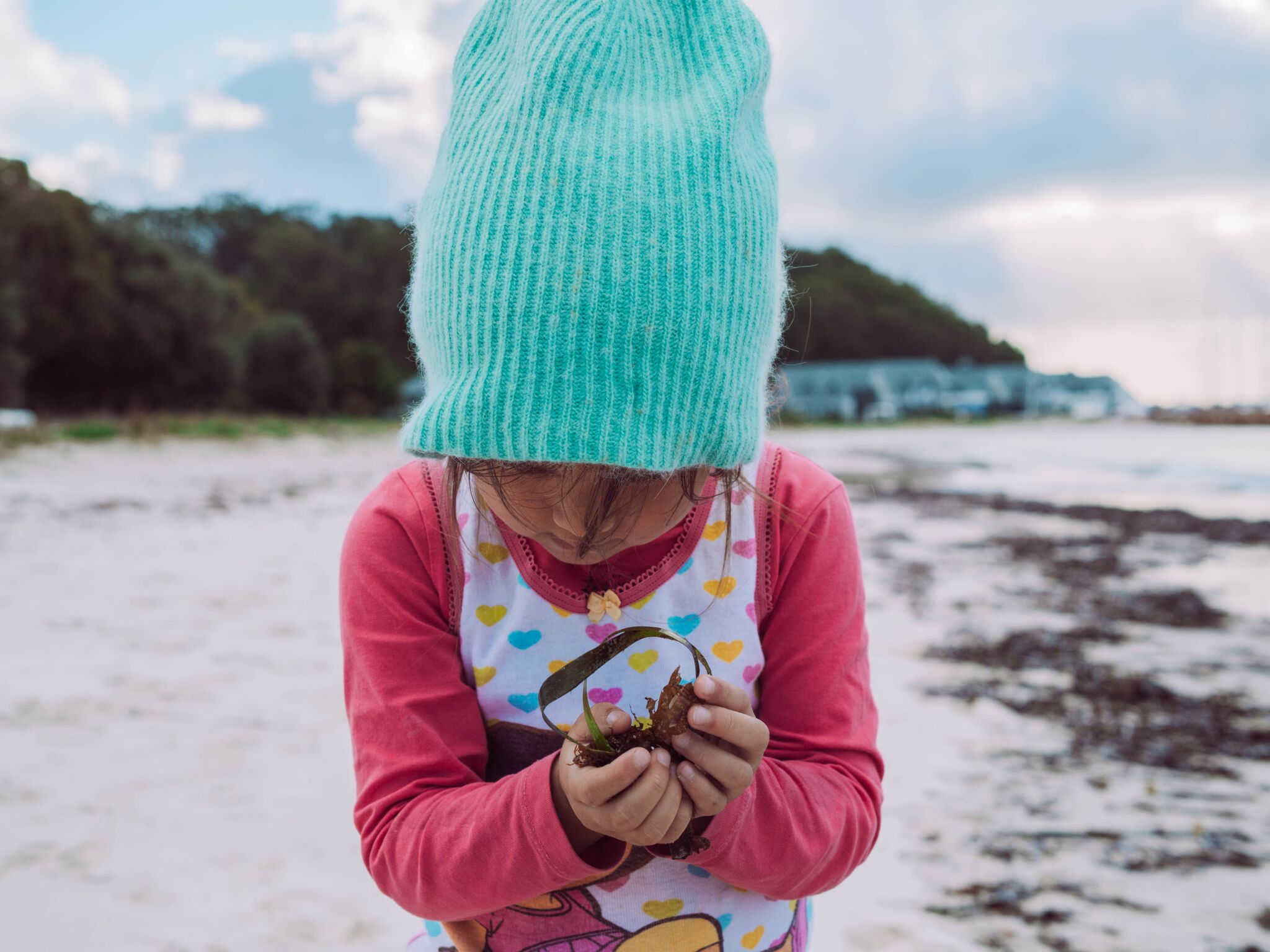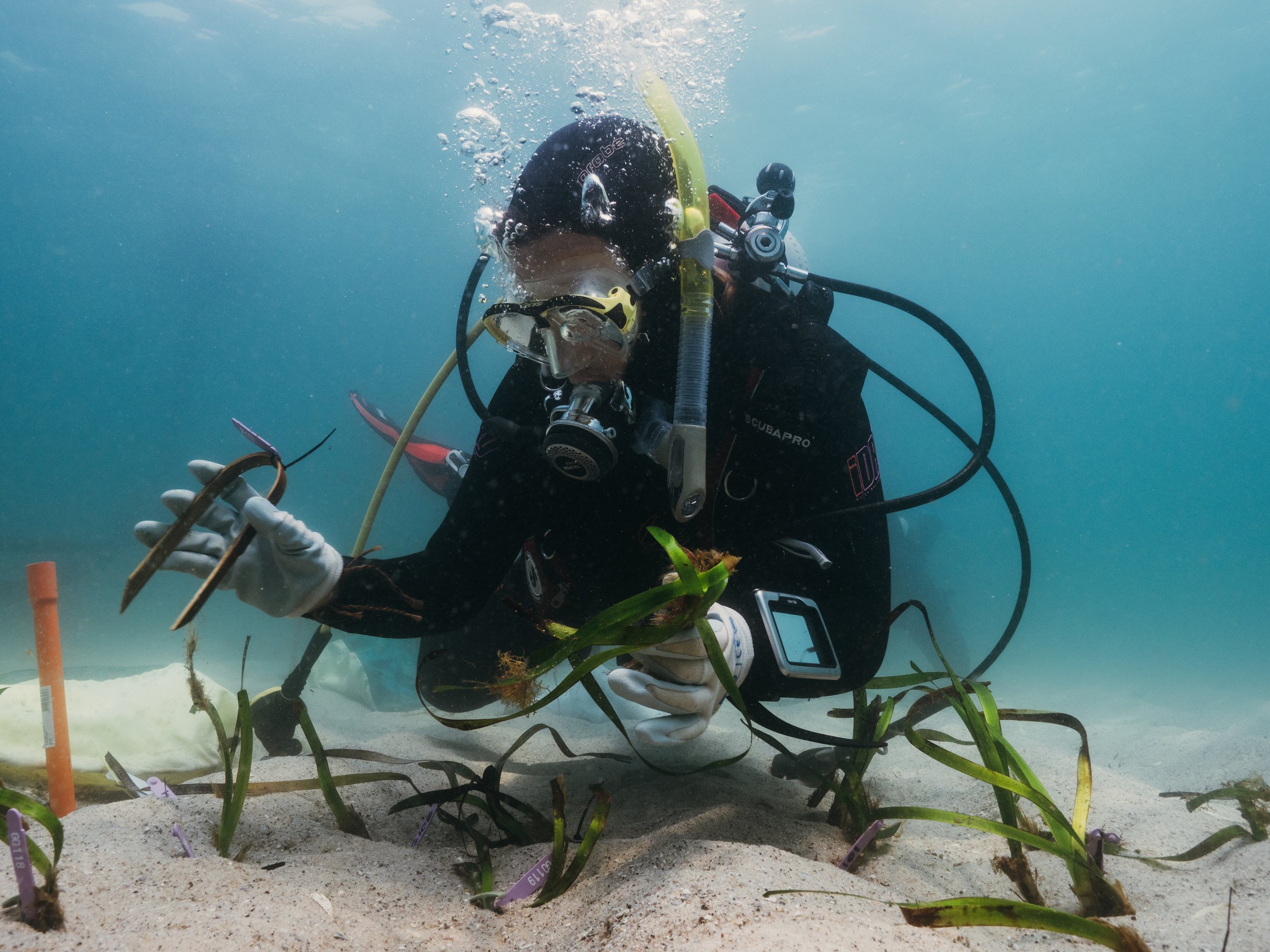Port Stephens is the ideal coastal playground . . .
…with inviting, calm waters perfect for fishing, swimming, and cruising on boats. These conditions are also ideal for seagrasses to flourish. Port Stephens is home to beautiful Posidonia australis meadows, however they are under threat.
Shoal Bay, near the estuary entrance, is the first home of Operation Posidonia. Since 2018, the team has been demonstrating that beach-cast fragments of Posidonia, collected by citizen scientists, are a fantastic solution for restoring this important habitat.
Map showing the location of Port Stephens on the NSW coastline
The Problem
Posidonia & Swing Moorings
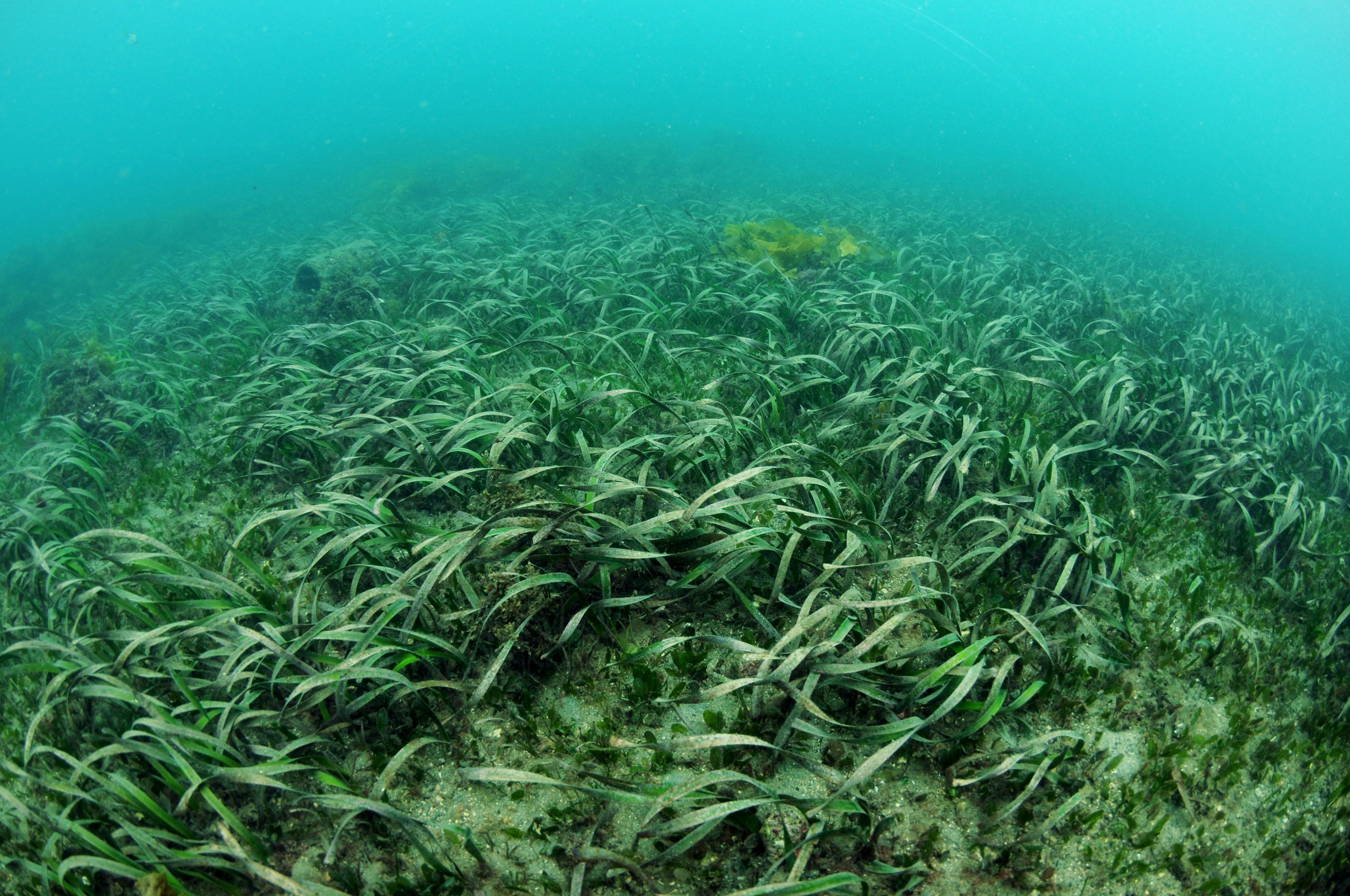
Boat moorings are one of the most obvious current disturbances to seagrass habitats, as the sheltered bays where seagrass naturally thrives are also the most ideal locations for people to moor their boats.
The problem with traditional, fixed block-and-chain boat moorings is that they scar the seafloor and remove seagrass shoots, causing the formation of bare patches that fragment the meadow and destabilise the sediment. As the mooring scars get larger, bare patches start to merge and this leads to further loss of Posidonia.
Mapping has shown that mooring scars can be very large, form quickly and can take decades to recover fully once a mooring is removed. Across NSW, currently leased moorings are causing losses of around 130,000 m2 (that is more than 26 football fields!), but the real loss is even greater, as many estuaries contain old scars that remain long after the relocation of moorings.
Traditional swing moorings disturb not only seagrasses but also other organisms living in the seafloor, leading to bare patches (photo credit: Kingsley Griffin)
Posidonia meadows in Port Stephens are the 2nd most impacted by swing moorings in NSW, but the Operation Posidonia team has been working to address this issue.
The Solution
Environmentally friendly moorings
&
Posidonia Restoration
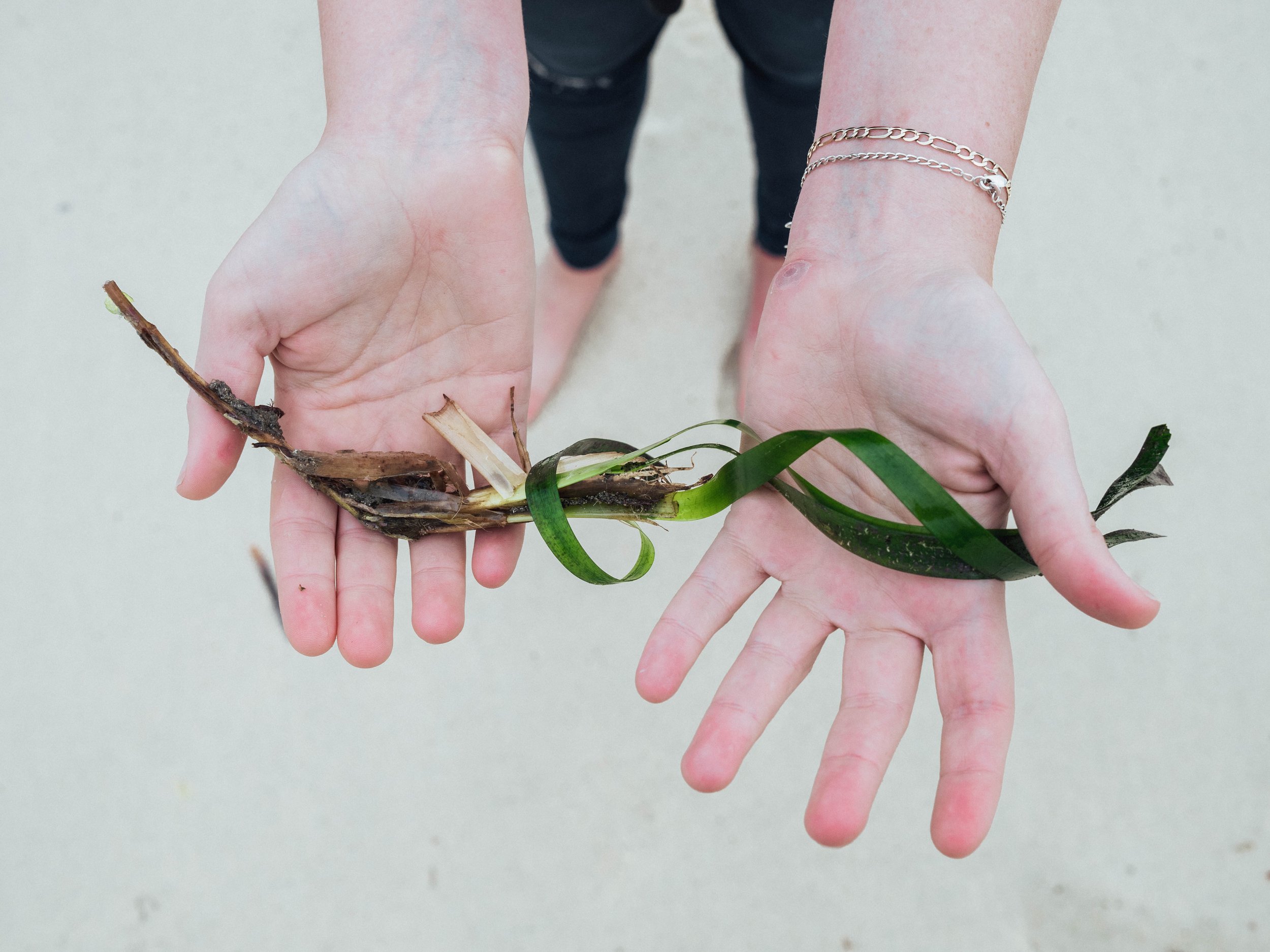
The Solution
Environmentally friendly moorings coupled with Posidonia Restoration
The only way to prevent damage to the marine environment by boat moorings is to change their design, so that there are no components dragging along the seafloor.
In recent years, a variety of mooring designs have emerged that prevent chains dragging along the seafloor. These new types of moorings are collectively known as Environmentally Friendly Moorings (EFMs), and they are slowly replacing traditional block and chain moorings in many coastlines worldwide, but are not yet used extensively in New South Wales.
Diagram: EFM vs Traditional swing mooring
Once mooring chains are removed, however, the natural revegetation of bare patches by Posidonia can be very slow, especially when mooring scars have expanded and altered local hydrodynamics. In some places it could take over 20 years for a mooring scar to be revegetated by Posidonia naturally.
Our aim is to give nature a helping hand and promote the recovery of Posidonia by combining the restoration of Posidonia in old mooring scars where swing moorings have been removed.
Storm Squad
Collecting beach-cast fragments of Posidonia to use in restoration helps us restore meadows without damaging vulnerable populations. To do this, we enlisted help from the local community to find washed up fragments before they dry out.
This exciting solution gives community members the opportunity to assist with marine conservation in a hands-on, meaningful way, all in the name of protecting the underwater world on their doorstep.
Restoration Results
The initial restoration project in Port Stephens has now wrapped up.
Results have been extremely promising. Some areas are showing up to 70% survival of transplanted Posidonia, with fragments producing new shoots after only 6 months. Restoration has also been successful under newly installed EFM’s, showing the combination is a promising future solution for both Posidonia and boat owners.
The Storm Squad volunteers have driven this restoration effort, with their contribution doubling our restoration capacity in Port Stephens.
PhD student Giulia Ferretto has been leading this research. Read about the Port Stephens restoration and Giulia’s research here.
Hear Giulia’s recent interview with SBS Italian here.
PhD student Giulia Ferretto
Giulia Ferretto restoring Posidonia meadows in Port Stephens (photo credit: Richard Woodgett)
What’s Next?
Operation Posidonia plans to continue restoring Posidonia meadows in Port Stephens as part of an upcoming project co-restoring the endangered White’s Seahorse. Stay tuned!
A White's Seahorse in seagrass habitat (photo credit: David Harasti)
We thank our collaborators from NSW DPI, SIMS and UWA, as well as our volunteers from UNSW and the Port Stephens community. Thank you to our friends Grumpy Turtle and Dr David Harasti who have helped bring the underwater world to your screens.
Operation Posidonia acknowledges the Worimi People, the Traditional Custodians of the Country on which we conduct our research for this project. We recognise their continuing connection to the land and waters, and thank them for protecting this coastline and its ecosystems for many generations. We extend these respects to Elders past and present, and to all First Nations people.
